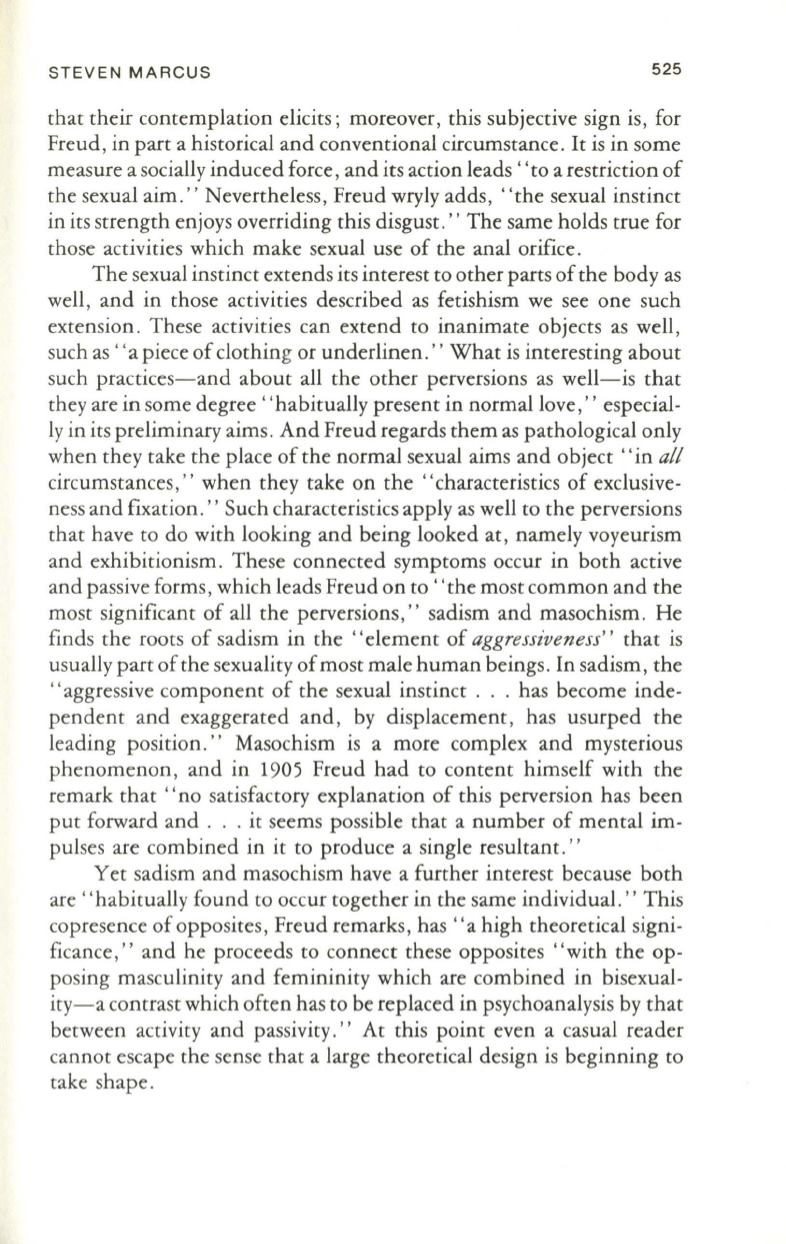
STEVEN MARCUS
525
that their contemplation elicits ; moreover, this subjective sign is , for
Freud, in part a historical and conventional circumstance . It is in some
measure a socially induced force, and its action leads ' 'to a restriction of
the sexual aim. " Nevertheless, Freud wryly adds, "the sexual instinct
in its strength enjoys overriding this disgust." The same holds true for
those activities which make sexual use of the anal orifice.
The sexual instinct extends its interest to other parts of the body as
well , and in those activities described as fetishism we see one such
extension . These activities can extend to inanimate objects as well,
such as " a piece of clothing or underlinen ... What is interesting about
such practices- and about all the other perversions as well-is that
they are in some degree' 'habitually present in normal love ,.. especial–
ly in its preliminary aims. And Freud regards them as pathological only
when they take the place of the normal sexual aims and object" in
all
circumstances," when they take on the "characteristics of exclusive–
ness and fixation ." Such characteristics apply as well to the perversions
that have to do with looking and being looked at, namely voyeurism
and exhibitionism. These connected symptoms occur in both active
and passive forms, which leads Freud on to' 'the most common and the
most significant of all the perversions, " sadism and masochism. He
finds the roots of sadism in the "element of
aggressiveness"
that is
usually part of the sexuality ofmost male human beings . In sadism, the
" aggressive component of the sexual instinct ... has become inde–
pendent and exaggerated and, by displacement , has usurped the
leading position." Masochism is a more complex and mysterious
phenomenon, and in 1905 Freud had to content himself with the
remark that "no satisfactory explanation of this perversion has been
put forward and ... it seems possible that a number of mental im–
pulses are combined in it to produce a single resultant."
Yet sadism and masochism have a further interest because both
are ' 'habitually found to occur together in the same individual ... This
copresence of opposites, Freud remarks, has' 'a high theoretical signi–
ficance," and he proceeds to connect these opposites "with the op–
posing masculinity and femininity which are combined in bisexual–
ity-a contrast which often has to be replaced in psychoanalysis by that
between activity and passivity ." At this point even a casual reader
cannot escape the sense that a large theoretical design is beginning to
take shape .


